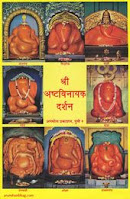The Lion of Nowshera!
In 1947 Pakistan sent tribal irregulars into the princely state of Jammu and Kashmir in an attempt to capture it and accede it to Pakistan. Brig Mohammad Usman, then commanding the 77th Parachute Brigade, was sent to command the 50th Parachute Brigade, which was deployed at Jhangar in December 1947. On 25 December 1947, with the odds stacked heavily against the brigade, Pakistani forces captured Jhangar.......
Not many people must have heard
about Brigadier Mohammed Usman. He is known as the Lion of Nowshera for his
brave exploits in repulsing the enemy in the state of Jammu & Kashmir
fighting the invading Pakistan forces. Brigadier Mohammad Usman MVC was the
highest ranking officer of the Indian Army killed in action during the
Indo-Pakistani War of 1947. As a Muslim, Usman became a symbol of India's
inclusive secularism, a true patriot.
Brigadier Mohammad Usman was born on July 15, 1912, in Bibipur in the Mau district of present-day state of Uttar Pradesh. Son of a police officer Mr Mohammad Farooq Khunambir and Mrs Jamilun Bibi, Brig Usman had three elder sisters, and two brothers, one of whom, Gufran, joined the Army, and also rose to the rank of a brigadier. Brig Usman was brave boy who at a young age, when just 12 years, he jumped into a well to save a drowning child. His father wanted him to join the civil services, but he was destined to don the military uniform and joined the Army.
Indians had begun to join the Army as commissioned officers since 1920, though the competition was very tough, and only the scions of the aristocracy or landed gentry were given preference. Though Brig Usman did not belong to the preferred class, he applied for Sandhurst and got selected, and in July 1932, sailed for England. In fact, this was the last course at Sandhurst to which Indians were admitted since subsequent batches joined the Indian Military Academy, which opened in Dehradun in the same year. Brig Usman passed out from Sandhurst on 01 February 1934, along with ten other Indians.
Also read:
Reaction to the reaction videos!
20 Indian firms in 500 most valuable globally, Reliance top: Hurun report
Apple, worth $2.4 trillion, is the most valuable company, followed by Microsoft with a value of $1.8 trillion: 2022 Hurun Global 500 report
Twenty Indian companies, up eight from last year, are among the 500 most-valuable ones in the world, a report released recently showed. With a valuation of $202 billion, Reliance Industries was the most valuable Indian company on the list. Globally, it was the 34th biggest company. Apple, worth $2.4 trillion, was the most valuable company, followed by Microsoft, with a value of $1.8 trillion.
In the last year, the top 500 companies of the world lost $11.1 trillion of their value, the 2022 Hurun Global 500 report released by Hurun Research Institute said.
"This year the Hurun Global 500 lost $11 trillion of value, losing all the value created last year but still $7 billion ahead of where the Hurun Global 500 were two years ago," Rupert Hoogewerf, chairman and chief researcher at Hurun India, said.
Tata Consultancy Services, valued at $139 billion, was the second most valuable Indian company on the list. Four companies of the Gautam Adani-led Adani Group featured in the top 500. These were Adani Transmission, Adani Green, Adani Green Energy and Adani Total Gas. At $63 billion, Adani Enterprises was the most valued among these.
Saudi Aramco was the world's most valuable listed state-controlled company, with a total value of $2.03 trillion. State Bank of India (SBI), at $62 billion, and the Life Insurance Corporation of India (LIC), at $45 billion, were the two biggest state-owned Indian companies. These did not feature in the list as they contained only non-state-controlled companies.
..............................................................................................
Picture Post:
 |
| Mahalsa Temple, Goa, India |
To
book an ad or an announcement on this blog.
WhatsApp: 91 9969154602 Email: akn929@yahoo.com
..............................................................................................
*Your
comments are welcome. We value them, to make the blog better.
*Guest
writers are welcome. Tell us about the subject. Get in touch.
*Please share this blog with your friends.
..............................................................................................
Recommended
viewing:
Anil
Naik - YouTube Channel
Please
like, comment and Subscribe.
..............................................................................................
Anil
Naik
WhatsApp:
91 9969154602
Email: akn929@yahoo.com
..............................................................................................
If you feel that Aneela Nike Post is making a difference to your life, do take a minute to consider a comment or contribution. We would also value your suggestions as how to make ourselves more relevant to you. Please write to akn929@yahoo.com to give your valuable feedback.















































